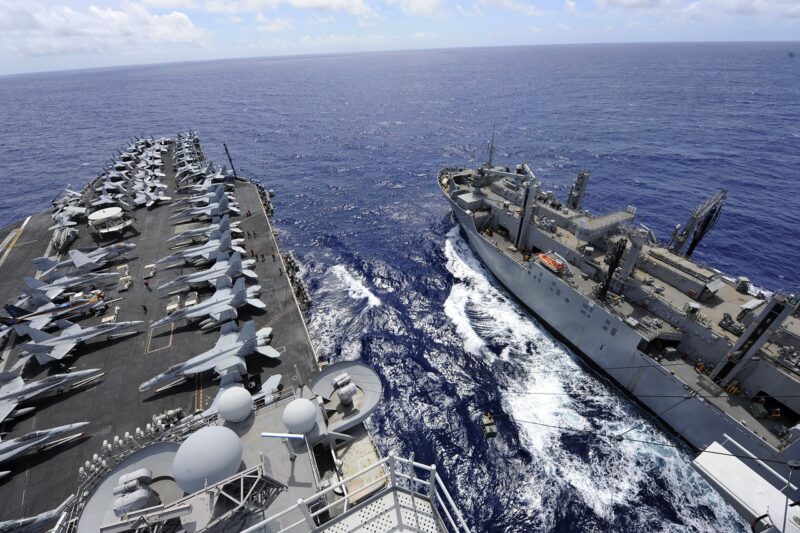Why Naval Aircraft Carriers Remain a Pillar of Military Power in Global Conflicts
November 16, 2024

Naval warfare has undergone significant transformations over the past century, yet one constant remains: the aircraft carrier. These floating fortresses symbolize military strength and versatility, enabling nations to project power across vast distances with unparalleled speed and efficiency. This article will delve into the enduring importance of naval aircraft carriers in modern military strategy, examining their roles, advantages, and the reasons they continue to be a cornerstone of military power.
1. The Evolution of Naval Aircraft Carriers
Aircraft carriers have come a long way since their inception in the early 20th century. Originally conceived as platforms to launch and recover aircraft, these ships have evolved into multi-mission combat vessels capable of engaging in diverse operations—from aerial warfare to humanitarian aid.
The first operational aircraft carriers were converted from existing naval vessels, such as the HMS Furious in World War I. By World War II, the significance of carriers was firmly established, with iconic engagements like the Battle of Midway showcasing their strategic impact. The post-war era saw the introduction of nuclear-powered carriers, further enhancing operational range and reducing the need for frequent resupply.
Today, modern carriers, like the U.S. Navy’s Gerald R. Ford-class, are technological marvels, equipped with advanced radar, precision navigation systems, and capabilities for launching a wide array of aerial platforms.
2. Power Projection and Strategic Deterrence
One of the primary roles of an aircraft carrier is power projection. Power projection refers to the ability of a nation to deploy military force in locations far from its territory. Carriers serve as mobile air bases, allowing nations to project military power into conflict zones without requiring access to local bases.
This capability holds profound strategic significance:
- Rapid Response: In crisis situations, carriers can mobilize quickly, providing immediate air support and surveillance capabilities where needed. Their ability to operate in international waters allows for discretion and reduced response times compared to land-based forces.
- Deterrence Factor: The presence of an aircraft carrier near potential conflict zones serves as a powerful deterrent. Nations are less likely to engage in hostile actions when they know sophisticated military capabilities are just a short flight away.
- Support for Allies: Carriers offer logistical and operational support to allied nations during times of conflict, enhancing collective defense initiatives and diplomatic efforts.
In scenarios such as the Gulf War and recent tensions in the South China Sea, the deployment of aircraft carriers has demonstrated their effectiveness in maintaining regional stability and peace.
3. Versatility and Multi-Role Operations
Aircraft carriers are not limited to combat operations; they are versatile assets capable of carrying out various missions. Some of their roles include:
- Air Superiority: Carriers can launch fighter jets that establish air dominance in conflict areas, ensuring control of the skies and supporting ground forces.
- Close Air Support: During ground operations, carrier-based aircraft can provide indispensable close air support, striking enemy positions and protecting friendly forces. Their ability to quickly adjust to dynamic battlefield situations gives them an edge over land-based aircraft.
- Humanitarian Assistance: Carriers can support humanitarian missions, providing medical care and supplies during disasters. Their onboard facilities, such as hospitals and helicopters, allow for immediate action in crisis situations.
- Intelligence, Surveillance, and Reconnaissance (ISR): Equipped with advanced radar systems and drones, carriers can perform ISR missions, gathering intelligence and monitoring developments in sensitive regions. This vital information informs strategic decisions, allowing military leaders to respond appropriately to developing situations.
The carriers’ multi-role capabilities mean they can adapt to various mission requirements, making them invaluable in any military strategy.
4. Technological Advancements
Modern naval aircraft carriers are equipped with sophisticated technology that enhances their operational capabilities:
- Advanced Avionics: Modern fighter jets launched from carriers, such as the F/A-18 Super Hornet and F-35 Lightning II, feature cutting-edge avionics that enhance combat effectiveness through improved targeting and mission planning capabilities.
- Catapult Systems: Innovations in electromagnetic catapults enable faster and more efficient aircraft launches, increasing the number of sorties that can be deployed in a given time period, bolstering overall operational output.
- Stealth Technology: The integration of stealth capabilities in carrier-based aircraft allows for operations in contested environments without being detected, expanding the operational theater in which they can engage effectively.
- Drones and Unmanned Systems: The use of drones on aircraft carriers represents a significant shift in naval warfare, with unmanned aerial vehicles (UAVs) providing surveillance and strike capabilities that complement traditional manned aircraft.
These technological advancements ensure that aircraft carriers remain relevant and capable of adapting to modern warfare’s evolving nature.
5. The Cost-Benefit Analysis of Carriers
While aircraft carriers represent significant investments, the advantages they provide often justify their costs. The price of building and maintaining a modern aircraft carrier can run into billions, but they serve multiple roles that can yield high returns in terms of military effectiveness:
- Return on Investment: By providing air support, deterrence, and rapid response capabilities, a carrier can achieve strategic objectives that might otherwise require larger, more costly deployments of forces.
- Economic Impact: Carriers are often involved in secure trade routes, contributing to economic stability and growth for nations reliant on maritime commerce.
- Global Influence: Countries with a robust carrier fleet are generally perceived as global powers, enhancing their influence in international relations and diplomacy, pivotal for maintaining global security.
Ultimately, the benefits derived from carriers often outweigh their costs, solidifying their status as linchpins in national defense strategies.
6. Challenges and Future Outlook
Despite their many advantages, naval aircraft carriers face challenges. The rise of advanced missile technology and nuclear capabilities poses a threat to carriers, necessitating ongoing improvements in defensive systems to ensure their survival in contested environments. Moreover, budgetary constraints and shifting military priorities may impact the future of carrier fleets.
Nevertheless, as long as nations continue to value power projection, deterrence, and multi-role capabilities, aircraft carriers will remain a cornerstone in military planning.
Conclusion
Naval aircraft carriers have proven time and again to be indispensable assets in military strategy across the globe. Their ability to project power, adapt to various roles, and leverage advanced technology ensures they will play a crucial role in the future of military engagements. As nations navigate an increasingly complex international landscape, the strategic importance of aircraft carriers remains steadfast, solidifying their place as pillars of military power.
Whether for deterrence, rapid response, or humanitarian missions, aircraft carriers will continue to shape the dynamics of global conflicts, emphasizing their unmatched versatility and effectiveness in modern warfare.







